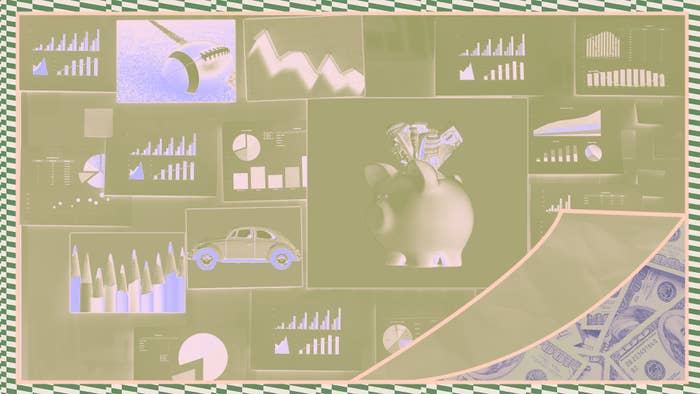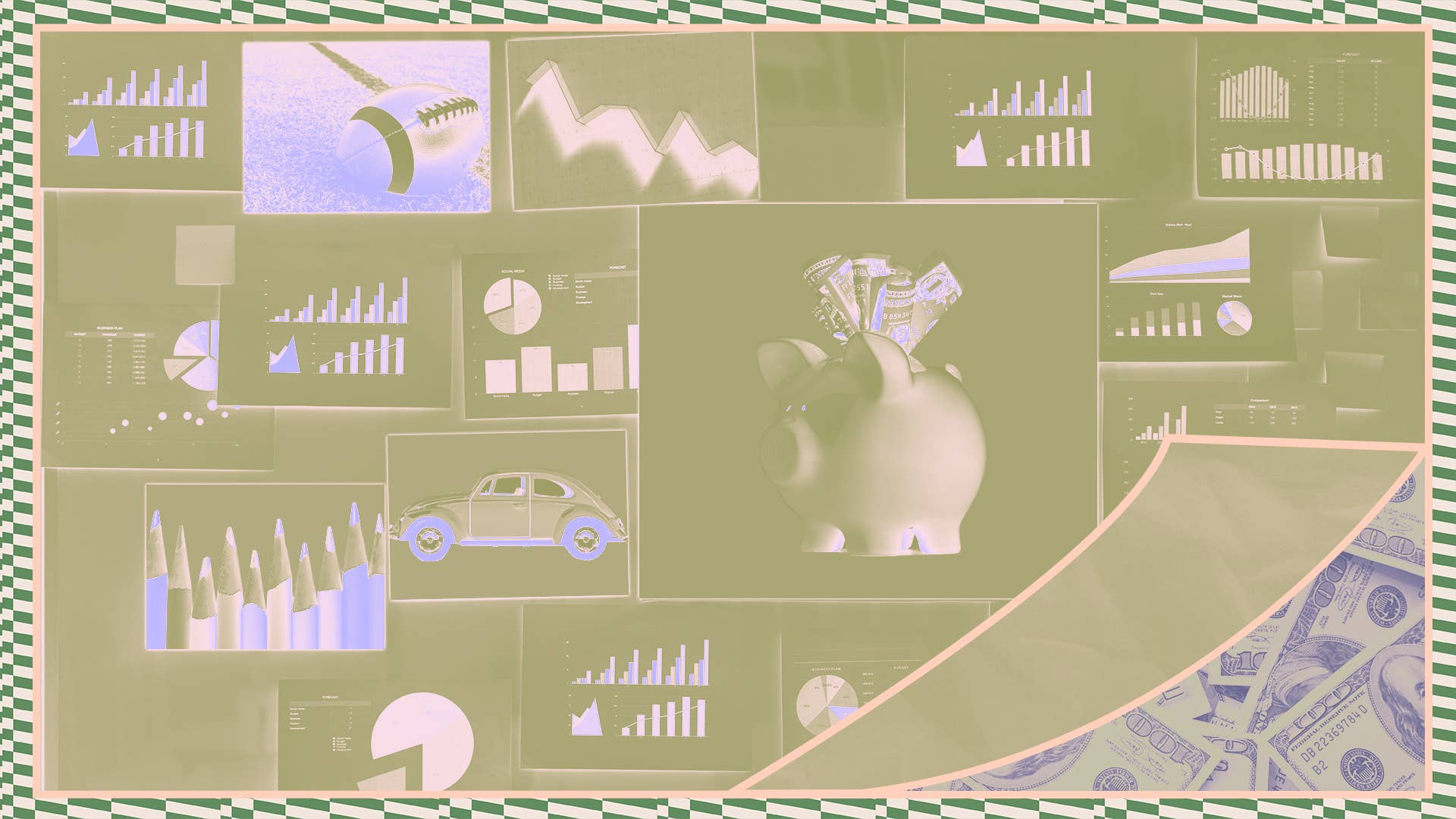
Tim Ranzetta’s financial education started when he was in elementary school, but it didn’t happen in any classroom. Instead, he learned about money on snow days. As other kids slept in or tuned in to The Price Is Right, Ranzetta would wrap himself in his warmest winter gear and grab a shovel from his garage. Then he’d trudge from door to door, selling neighbors his snow-shoveling services.
“For me, a snowstorm wasn’t a holiday,” he says. “It was a business opportunity.”
During the ensuing decades, Ranzetta’s businesses grew more ambitious, from driving a shredding truck to consulting to founding startups. He felt that early exposure to financial education, however informal, had helped him navigate early adulthood. So in 2010, he volunteered to teach a personal finance class at a high school near his home in Palo Alto, California. But when he searched for lesson plans online, the information seemed like it hadn’t been updated since he was scraping his neighbors’ driveways clear in the 1970s. “What kid is going to care,” he remembers thinking, “about balancing a checkbook?”
In fact, financial education had stagnated during much of Ranzetta’s lifetime. If you’re slightly skeptical of TikTok, if you had to Google the definition of “cheugy,” or if you still use the crying laughing emoji (😂) daily—in other words, if you’re in your 30s—you probably didn’t take a financial education course in high school. Before 2000, only four states required students to take one in order to graduate. Which means you probably didn’t learn about budgeting, taxes, or credit in a high school classroom.
“I was really lucky,” said Ranzetta, who founded and helps run Next Gen Personal Finance, a nonprofit that provides free financial training for students and teachers. “My dad was a banker. He taught me about money. My parents were middle class. But for too many kids today, financial literacy is a real problem. Our mission is to make sure that every student in the country is guaranteed a semester-long personal finance class through their public school.”
“There don’t tend to be a lot of opponents to personal finance, so it only really takes one passionate person to create a grassroots movement and get a bill passed.” – Carly Urban
Research has shown that finance education mandates at the high school level do correlate with improved credit scores, reduced delinquency rates, reduced payday borrowing, and reduced non-student debt. So why isn’t financial education a part of public school curricula? Schools devote plenty of time to subjects that students are unlikely to ever use again. When’s the last time you wrote in cursive? Or needed to know whether an element on the periodic table was metal or nonmetal? Or gotten out of a jam by climbing a rope that was, for some reason, dangling from the center of the ceiling?
Excerpts from textbooks and recollections from retirees at least anecdotally confirm that personal finance was a part of public education until about the 1950s. After that, the subject seemed to take a backseat to STEM—science, technology, engineering, and mathematics. “A lot of it was driven by the space race,” says Laura Levine, the CEO of Jumpstart, a nonprofit that advocates for youth financial literacy. “Throughout the 1960s and ’70s, the emphasis shifted to science and technology, and to raising our kids to go to college and move toward white-collar careers. Adults who had been taught about personal finance in the classroom just assumed that their kids were being educated as well, but they weren’t. The subject just faded away.”
But the nature of America’s education system makes it difficult to be sure how prevalent personal finance education was in the past. The US Department of Education didn’t begin operating until 1980. Before that, educational standards and school curricula decisions were largely left to individual schools, school districts, and states. That remains mostly true today, but federal initiatives like No Child Left Behind and Common Core have attempted to make public education more uniform across the country.
When it comes to personal finance, the lion’s share of progress has come through state legislatures. “It’s really been a grassroots movement,” says Carly Urban, an associate professor of economics at Montana State University who has studied youth financial education legislation and efficacy. “There’s no clear evidence that it’s partisan. There’s no clear evidence that it’s driven by economic downturns. There don’t tend to be a lot of opponents to personal finance, so it only really takes one passionate person to create a grassroots movement and get a bill passed.”
“Americans are living on the brink of economic peril.” – Nan Morrison
Since 2000, there has been a huge expansion in personal finance education at the state level. Depending on how you define the terms, almost half of states now require personal finance to be taught either within another course or as a standalone subject. This year alone, 25 states have introduced legislation that would add the subject to their public school curricula. In June, three states signed those bills into law. “There has been something special about the pandemic—special in a sad way,” says Nan Morrison, the CEO of the Council for Economic Education, which releases a survey of state personal finance requirements every two years. “Within days of the shutdown last year, people were in line at food banks. Americans are living on the brink of economic peril.”
Ideally, advocates say, personal financial education should focus on the practical necessities of living in a modern economy. Students enrolled in Next Gen’s courses learn about topics like personal income taxes, checking and savings accounts, saving and paying for college, and investing. The goal is to make sure that students can confidently open bank accounts, check their credit, or apply for loans that they won’t be handcuffed to for life because of high interest rates or fees. They can also take the first steps toward understanding investing, opening the door to generating and building long-term wealth.
Still, despite the benefits they seem to offer, these measures have opponents. Some critics of personal finance education argue that it places more of the burden on living in an unequal society on the disadvantaged. They say that redistributing wealth through progressive taxation or providing a universal basic income would be more effective means of leveling the financial playing field. “Inequality is surging not because people don’t know how to manage their money,” columnist Helaine Olen wrote in The Washington Post, “but because the wealthiest Americans bought themselves a government that for decades took care of their financial interests ahead of everyone else’s.”
“This is a social justice issue.” – Tim Ranzetta
Advocates for personal financial education in public schools largely do not object to the idea of giving poor people money directly. “We believe in a living wage,” Levine says. “We believe that people who are working full time in this country should have enough money to live on. But whether you’re rich or poor, isn’t it better to know more about your money?”
They worry that the poorest communities are also the most likely to be harmed by exploitative financial schemes like payday loans, money orders, and tax advances. “This is a social justice issue,” Ranzetta says. “Nationwide, 1 out of every 5 high school kids is guaranteed a personal finance course. If you zoom in and look at schools where a majority of students are enrolled in free and reduced-price lunches, that number goes down to 1 in 14. If you look at school districts where more than 75 percent of students are Black and brown, it’s one in 14.”
That’s why Next Gen Personal Finance has targeted Miami-Dade and Milwaukee counties for a program that provides a three-year grant to pay for the salary and benefits of a personal finance teacher. They’re trying to make a difference in districts where it could impact the most students. A recent study also suggested that personal finance offerings can spread from district to district, even absent legislation. The phenomenon was particularly pronounced in the states of North Carolina and Maryland. “It’s a wildfire-like effect,” Urban said. “When one school requires it, a bunch of other schools will quickly do the same.”
Ranzetta and his organization are hoping that the explosion of interest in personal finance education continues long after the pandemic. Next Gen Personal Finance is advocating for every state to require a standalone semester-long course by 2030. Those classes won’t solve all of society’s financial problems, but Ranzetta and other advocates believe that they will help.
“We know that better education alone won’t protect victims of financial fraud or discrimination, won’t provide better access to service and opportunities, and won’t guarantee workers a livable wage,” says Jumpstart CEO Levine. “We do believe, however, that financial education is a strong foundation on which equity, access, opportunity, service, and consumer protections can—and will—be built.”

